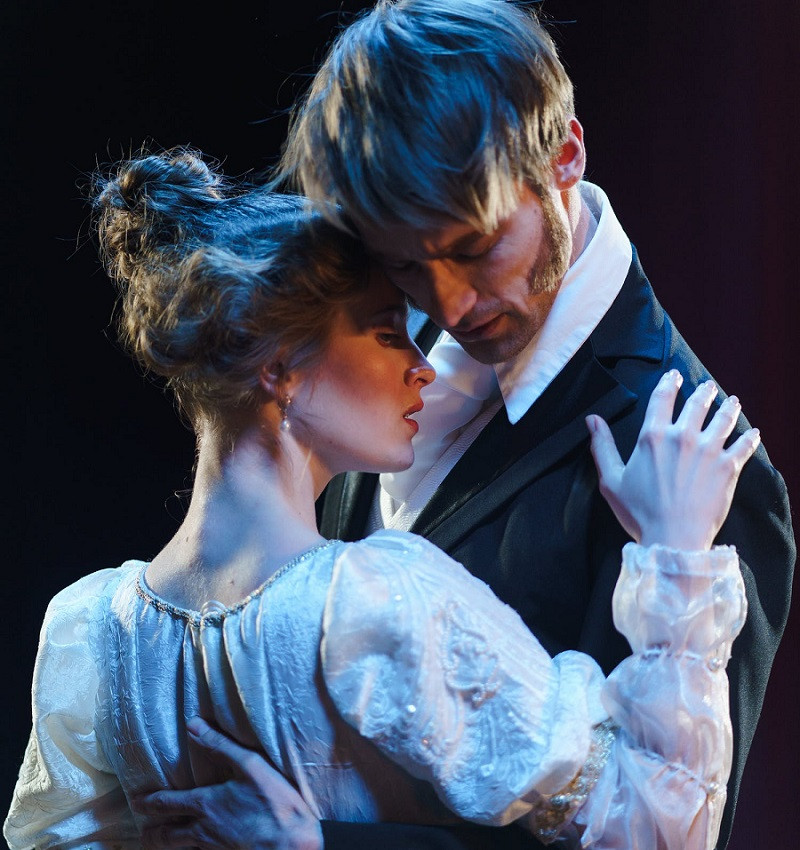They say that Stanislavski’s favorite words to his acting pupils were “I don’t believe you, you don’t convince me.” His way of seeing and understanding how theater artists should act was demanding but also meticulous. So much so that it became his own method: the Stanislavski system
His systematic approach to acting not only revolutionized the way acting was done in the Russia of his time, but also managed to cross borders, changing the course of Western theater.
This method has been crucial for plays, series and movies to be as we know them today and below we will discover why.
What is the Stanislavski system?
Konstantin Sergeevich Alekseyev (Moscow 1863 – 1938), better known as Stanislavski, was a prolific Russian actor, stage director and theater pedagogue known for being the author of one of the most important methods for the history of performing arts: the Stanislavski system. The product of many years of effort, his method was intended to enable actors to control the most intangible and uncontrollable aspects of human behavior while on stage, such as emotions and artistic inspiration.
Stanislavski studied what actors did who, naturally, managed to get into character Based on his observations and experiences, this Russian director created a system that every actor, both new and veteran in the profession, could apply in his works, achieving a cleaner, more real and natural performance. This method was so revolutionary at the time of its appearance that it marked a before and after in the world of acting, establishing standards that delimited the line between a convincing performance and one that was artificial and poorly represented.
He formulated this method at a time when the performing arts of his homeland, Russia, were characterized by conventional and stereotyped clichés. The actors acted artificially, even histrionically. The plays were bathed in an aura of false emotionality and little preparation on the part of the actors, so little that they even found out what they had to say when they were already on stage. Little or no attention was paid to the scripts containing what they should have memorized.
Stanislavski carried out meticulous research to make his actors work from the beginning with something they perceived as real , people, elements and objects seen not as mere elements of a setting, but as parts of a real, mundane scene, part of life itself. People are not actors in our lives, but rather we are part of them, we live them more than act them.
To get the actor to delve into the scene he is representing, Stanislavski defends the use of emotional memory. The actor or actress must remember a personal experience similar to the one he is trying to represent, helping him to feel more immersed and involved in what he is trying to represent on stage. He must look for a situation in his life history in which he felt an emotion analogous to that of his character.
But this is not achieved solely by evoking sincere emotion. It is also necessary to have a little external support, modify our appearance and behavior in order to give life to the character that is intended to represent or, rather, bring to life. Putting on makeup, dressing, walking, in short, behaving like the character since external physical acts help trigger the desired emotion, following the principle that if you start crying, you end up being sad.
The principles of the Stanislavski system
The Stanislavski system is quite complex and cannot be said to be static precisely because of how much it has evolved since it was conceptualized at the beginning of the 20th century. However, it is possible to highlight some of its most important principles, which have contributed to marking a before and after in the way in which theater artists and, later, films and series, represented their characters:
1. Focus on the character
The actor must respond to the imagination learning to think like the character, concentrating on being what you are playing

2. Sense of truth
With a sense of truth we could say that one of the ideas of this method is to differentiate between the organic and the artificial. Stanislavski was a firm believer that there were natural laws that must be followed in the performing arts which, if respected, differentiated a good, natural and harmonious work, from a bad, artificial and overacted one.
3. Act according to the given circumstances
The actor must be skilled in the use and management of the circumstances given to him in the text, but through the truth and resorting to organic means. Is about sticking to the script but freeing yourself by representing your emotionality staying faithful to what appears in the script but making the performance have personality and naturalness.
4. The physical method
Stanislavski saw that many of his pupils had deep emotional tensions and psychological problems Through his method, he could help eliminate the physical and emotional tension of the actors, causing them to relax their muscles while performing and act in a much more liberated way.
Added to this, the Russian director gave extraordinary importance to the physical factor that not only served to relax but also to stage in a more reliable way. It is because of this that his system has also been known as method of physical action due to its great emphasis on relaxing the muscles while the performance is carried out
5. Areas of attention
The spheres of attention are what Stanislavski meant by working on sensations. The actor must discover the sensory basis of the work Your task is to learn to memorize and remember the sensations that your character feels, sensations that modulate your mood and your way of behaving with the other characters in the play and with the audience.
6. Communication and contact
The actor must be able to interact with other characters spontaneously, without violating the content of the script but without seeming forced or artificially prepared. Communication and contact with the other actors is essential during rehearsals and final performances.
- You may be interested: “The 28 types of communication and their characteristics”
7. Roles segmented into units and objectives
Artists must learn to divide the role or role of their protagonists into sensible units that can work separately. It is the actor’s and actress’s task to define each unit of the role, feeling it as their own desire rather than understanding it as a literary idea that arises from the director’s script.
8. Creativity in acting and thinking
You can’t be an actor without being creative. The creativity It manifests itself both in a creative state of mind and in the way one acts
- Related article: “What is creativity? Are we all “potential geniuses”?”
9. Work with the text of the script
This principle may sound obvious, since it is difficult to faithfully represent a work while completely ignoring what it says in the script. However, in Russia at the beginning of the last century, some Russian artists did not take this for granted, since on many occasions it happened that they did not read the scripts and trusted that their lines would be told to them while they performed.
The actor must respect what is written in the script, memorizing and internalizing his lines, but not learning it to “vomit” it at the time of the play. The actor must discover the social, political and artistic meaning of the text , understand the ideas that the director has immortalized in the script of the work. As an artist, the actor or actress must serve as a means to entrust these values and visions to the public who has come to see the work.
The importance of the Stanislavski system today
The Stanislavski system has evolved over time. At first what the actors and actresses had to do was find the truth of the character, treat him as a real entity. However, with the passage of time The practice of finding in your own experience the resources that allow you to feel what your character feels is incorporated in any situation.
Nowadays it is understood that the actor must not only understand what happens to his character within the play, but must also know the life situation he is in and what circumstances surround him. Knowing this and experiencing it firsthand, the actor will be able to react in the same way as his character would be expected to do, making the performance as natural as possible.
This has gone much further, reaching the current fact that many artists live their daily lives as they believe their character would For example, his character is a farmer who lives in the countryside, then the actor goes to a farm for a while and lives as if that were his real-life profession. As the years went by, different acting schools added certain practices to the Stanislavski system, becoming over time what is known in the acting world as “the method.”









